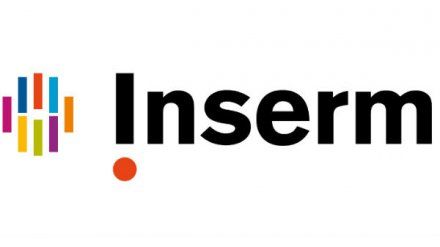预约演示
更新于:2025-05-07
POU2F1
更新于:2025-05-07
基本信息
别名 NF-A1、Oct-1、OCT1 + [7] |
简介 Transcription factor that binds to the octamer motif (5'-ATTTGCAT-3') and activates the promoters of the genes for some small nuclear RNAs (snRNA) and of genes such as those for histone H2B and immunoglobulins. Modulates transcription transactivation by NR3C1, AR and PGR.
(Microbial infection) In case of human herpes simplex virus (HSV) infection, POU2F1 forms a multiprotein-DNA complex with the viral transactivator protein VP16 and HCFC1 thereby enabling the transcription of the viral immediate early genes. |
关联
2
项与 POU2F1 相关的药物CN119585253
专利挖掘作用机制 POU2AF1 inhibitors [+1] |
非在研适应症- |
最高研发阶段药物发现 |
首次获批国家/地区- |
首次获批日期1800-01-20 |
CN117563006
专利挖掘靶点 |
作用机制- |
在研适应症 |
非在研适应症- |
最高研发阶段药物发现 |
首次获批国家/地区- |
首次获批日期1800-01-20 |
100 项与 POU2F1 相关的临床结果
登录后查看更多信息
100 项与 POU2F1 相关的转化医学
登录后查看更多信息
0 项与 POU2F1 相关的专利(医药)
登录后查看更多信息
2,247
项与 POU2F1 相关的文献(医药)2025-06-01·Molecular Metabolism
LOX-1 rewires glutamine ammonia metabolism to drive liver fibrosis
Article
作者: Zhu, Xiaoyun ; Fu, Chuankui ; Huang, Ruihua ; Jiang, Wei ; Hu, Changping ; Zhou, Shuhan ; Yahya Ali Alshami, Mohammed Abdulaziz ; Cui, Hanyu ; Cai, Mingyuan
2025-04-05·Chinese Medical Journal
POU2F1 inhibits miR-29b1/a cluster-mediated suppression of PIK3R1 and PIK3R3 expression to regulate gastric cancer cell invasion and migration
Article
作者: Dai, Weiyu ; Lin, Zhizhao ; Wang, Jide ; Jiang, Ping ; Xiao, Wushuang ; Li, Jiaying ; Xiao, Yizhi ; Hong, Linjie ; Yang, Ping ; Zhang, Jieming ; Pei, Miaomiao ; Yang, Juanying ; Ai, Xinbo ; Li, Xiaofeng ; Xiang, Li ; Lin, Jianjiao ; Li, Guoxin ; Tang, Weimei ; Yu, Zhen
2025-04-01·Journal of Dairy Science
Canonical prolactin signaling and global mRNA expression in the skin of Holstein heifers carrying the SLICK1 allele of the prolactin receptor gene
Article
作者: Rabaglino, Maria B ; Denicol, Anna C ; Altman, Montana D ; Hovey, Russell C ; Mathews, Alice T
12
项与 POU2F1 相关的新闻(医药)2025-02-24
ChenFJMU团队编辑(原创)
思语湖畔Quote
Whatever the mind can conceive and believe, it can achieve.—Napoleon Hill
FDA新药速递
【25年1月】看点
FDA于2025年1月批准3款新药,分别为治疗激素受体(HR)阳性和人类表皮生长因子受体2(HER2)阴性乳腺癌ADC药物Datroway;用作急性髓系白血病(AML)或骨髓增生异常综合征(MDS)患者异基因造血干细胞移植(allo-HSCT)的Grafapex。;以及治疗成人中度至重度急性疼痛的Na1.8通道抑制剂Journavx。
01
Trop2抗体药物偶联物——Datroway开创HR+/HER2-乳腺癌治疗新篇章。
02
烷化剂Grafapex为AML和MDS患者带来干细胞移植的“升级版”效果!
03
急性疼痛的治疗迎来新曙光!Na1.8通道抑制剂Journavx打破阿片类止痛药的成瘾性。
细说FDA新药【25年1月】
(ChenFJMU)
Datroway,01
Datroway(Datopotamab deruxtecan-dlnk,德达博妥单抗ADC),由阿斯利康公司与第一三共株式会社共同研发,于2025年1月17日获FDA批准上市,用于治疗既往已接受过基于内分泌治疗和针对不可切除或转移性疾病的化疗的不可切除或转移性、激素受体(HR)阳性、人表皮生长因子受体 2(HER2)阴性的乳腺癌。Datroway属于抗体药物偶联物(ADC),目前,FDA已批准两种Trop2定向抗体和拓扑异构酶抑制剂偶联物,另一种是2020年4月20日获批的用于治疗局部晚期或转移性三阴性乳腺癌的Trodelvy。
FDA批准上市的两款Trop2定向抗体和拓扑异构酶抑制剂偶联物
(ChenFJMU原创)
注:ChenFJMU原创,转载需要标注出处!
【结构与剂型处方】
Datopotamab deruxtecan-dlnk 是一种Trop2定向抗体和拓扑异构酶抑制剂抗体偶联物(ADC),由人源化抗Trop-2的IgG1单克隆抗体(mAb)通过基于四肽的可裂解连接子与拓扑异构酶I抑制剂(Dxd)共价连接。该抗体是通过重组DNA技术在中国仓鼠卵巢细胞(CHO细胞)中生产的,拓扑异构酶抑制剂和连接子则是通过化学合成生产的。大约每个抗体分子上连接有4个Deruxtecan分子。结构式如下:
Datroway注射液是一种无菌、白色至黄白色、不含防腐剂的冻干粉。每小瓶冻干粉含有100 mg的Datopotamab deruxtecan-dlnk、3.88 mg的L-组氨酸、5.25 mg的L-组氨酸盐酸盐一水合物、1.50 mg的聚山梨醇酯80和450 mg的蔗糖。用5 mL注射用无菌水配制成药物浓度为20 mg/mL,pH值为6.0的注射液,静脉输注给药。
【作用机制】
TROP-2是一种在HR阳性、HER2阴性乳腺癌过表达的糖蛋白。TROP-2 IgG1是一种人源化抗TROP-2的单克隆抗体,它能够特异性地识别并结合到TROP-2蛋白上,引导抗体药物偶联物(ADC)直接作用于肿瘤细胞,从而提高治疗效果并减少对正常细胞的损害。
Datroway作为一种抗体药物偶联物(ADC),它通过将人源化的抗TROP-2 IgG1单克隆抗体与拓扑异构酶I抑制剂负载物(DXd)通过四肽的可裂解连接子相连,使得Datroway能够精准靶向癌细胞,在经历内化进入细胞和被溶酶体酶切割连接子,释放出的DXd抑制DNA拓扑异构酶I,导致DNA损伤和细胞凋亡,从而发挥抗肿瘤作用。
Datopotamab deruxtecan-dlnk作用机制图
(Satoru Yasuda, et al. Mol Cancer Ther. 2021,20 (12): 2329–2340.)
【药效学及药代动力学】
药效学:Datopotamab deruxtecan-dlnk 药效动力学反应的时间过程尚不清楚。
暴露-效应关系:在乳腺癌中,Datopotamab deruxtecan-dlnk 暴露-效应关系尚未完全确定。全身系统暴露量增加与严重不良反应、剂量中断、剂量减少、口腔炎/口腔黏膜炎、眼部不良反应以及3级及以上不良反应的发生率增加有关。
心脏电生理:当Datopotamab deruxtecan-dlnk剂量高达10 mg/kg(推荐剂量的1.7倍)时,未观察到QTc间隔平均增加>20 ms。
药代动力学:
分布:Datopotamab deruxtecan-dlnk 平均稳态分布容积3.5(23%)L。DXd血浆蛋白结合率约为98%,体外血液与血浆浓度比为 0.6。
消除:Datopotamab deruxtecan-dlnk半衰期为4.8 d(1.0, 8.2),清除率估计为 0.6 (31.5%) L/d。释放的DXd半衰期约为5.5 d(3.2, 8.8)。
代谢:Datopotamab deruxtecan-dlnk在溶酶体酶的作用下发生细胞内裂解,释放DXd。人源化Trop-2 IgG1单克隆抗体预计将以与内源性IgG相同的方式通过分解代谢途径降解为小肽和氨基酸。在体外,DXd 主要由CYP3A4代谢。
特殊人群用药:
Datopotamab deruxtecan-dlnk和DXd的平均分布容积和清除率随体重的增加而增加(36 kg~156 kg)。
1、轻度肝功能不全或轻度至中度肾功能不全患者:未观察到Datopotamab deruxtecan-dlnk或DXd的药代动力学有临床显著差异。
2、中度肝功能不全患者:Datopotamab deruxtecan-dlnk药代动力学与肝功能正常患者相当,稳态平均DXd AUC比肝功能正常患者高2.4 倍。
3、严重肝功能不全或严重肾功能不全患者:Datopotamab deruxtecan-dlnk或DXd药代动力学的影响尚不清楚。
药物相互作用:
1、临床研究和模型指导方法:当与伊曲康唑(强CYP3A抑制剂)或利托那韦(双重OATP1B和CYP3A抑制剂)同时使用时,预计DXd 药代动力学没有临床显著差异。
2、体外研究:对于CYP450 酶,DXd不会抑制CYP1A2、CYP2B6、CYP2C8、CYP2C9、CYP2C19、CYP2D6或 CYP3A,也不会诱导CYP1A2、CYP2B6或CYP3A。DXd不被UGT酶进行显著代谢。DXd是OATP1B1、OATP1B3、MATE2-K、P-gp、MRP1 和 BCRP 的底物。DXd不会抑制 OAT1、OAT3、OCT1、OCT2、OATP1B1、OATP1B3、MATE1、MATE2-K、P-gp、BCRP或BSEP转运蛋白。
【非临床毒理学】
Datopotamab deruxtecan-dlnk的拓扑异构酶抑制剂成分DXd在体内大鼠骨髓微核试验和体外中国仓鼠肺染色体畸变试验中均具有致染色体断裂作用,但在体外细菌回复突变试验中不具有致突变作用。尚未进行致癌性研究及专门的生殖毒性研究。
【临床研究】
在一项多中心、开放标记、随机,包含732名不可切除或转移性HR阳性、HER2阴性乳腺癌患者的试验中,将365名分配治疗组,367名分配化疗组,评估每21天周期静脉注射一次Datroway 6 mg/kg和研究者选择的艾日布林、卡培他滨、长春瑞滨或吉西他滨的单药化疗,对不可切除或转移性HR阳性、HER2阴性乳腺癌成年患者的疗效和安全性。主要疗效终点包括无进展生存期(PFS)和总生存期(OS)。
研究结果显示,治疗组患者的中位无进展生存期(PFS)为6.9个月(范围:5.7~7.4),而单药化疗组的中位无进展生存期(PFS)为4.9个月(范围:4.2~5.5)。风险比为0.63(95% CI:0.52, 0.76),表明Datroway组的风险较低。p值小于0.0001,表明两组之间的差异具有高度统计学意义。化疗组的中位生存期(OS)为18.3个月(95% CI:17.3, 20.5),与Datroway组的18.6个月(95% CI:17.3, 20.1)相似。风险比为1.01(95% CI:0.83, 1.22),表明两组之间的差异不显著。因此,与化疗组相比,随机接受Datroway治疗的患者的PFS有统计学显著改善。
【用药指南】
Grafapex,02
Grafapex (Treosulfan,曲奥凡舒),由美国制药公司Medexus Pharmaceuticals研发,于2025年1月21日获FDA首次批准。Grafapex作为烷化剂,与氟达拉滨联合使用,作为1岁及以上急性髓系白血病(AML)或骨髓增生异常综合征(MDS)成人和儿童患者,在接受异基因造血干细胞移植前的准备方案。
常见的FDA批准的烷化剂
(ChenFJMU原创)
注:ChenFJMU原创,转载需要标注出处!
【黑框警告】
Grafapex会导致严重且长期的骨髓抑制。需要进行造血干细胞移植,以防止长期骨髓抑制可能致命的并发症。监测血液学实验室参数。
【结构与剂型处方】
Grafapex(Treosulfan)是一种装在玻璃小瓶中的白色、无菌、冻干粉末,每瓶含1 g或5 g Treosulfan,用于静脉注射。注射用Grafapex含有一种烷化剂 Treosulfan。Treosulfan 的化学名称为L-苏糖醇-1,4-二甲磺酸盐。Treosulfan 不吸湿,在 25ᴼC 时可溶于水(7% m/v),分子式为 C6H14O8S2,分子量为 278.3 g/mole,化学结构如下:
【作用机制】
Grafapex(Treosulfan)是一种具有细胞毒性活性的双功能烷化剂的前药,它在体内自发转化为单环氧化物中间体和L-二环氧丁烷。这些环氧化物的高反应活性使其能够与鸟嘌呤的N7位点发生亲核攻击,形成烷化产物,诱导DNA链内交联或链间交联,阻碍DNA的正常复制和转录,干扰癌细胞和造血前体细胞的正常功能。由于DNA损伤无法修复,细胞会启动凋亡程序,从而导致细胞死亡。
【药效学及药代动力学】
药效学:Treosulfan的暴露量增加与感染相关死亡率的增加有关,药效学反应的时间过程尚不清楚。
药代动力学:Treosulfan是一种前体药物,其平均值±标准差(SD)下的曲线下面积(AUC)为1200±211 hr mcg/mL。没有剂量累积。
分布:Treosulfan平均分布容积约为41 L(CV% : 19%),且不与血浆白蛋白结合。
消除:Treosulfan平均(±标准差)终末半衰期为1.7±0.4 h。
代谢:药理学上无活性的Treosulfan在生理条件下自发转化为活性单环氧中间体(2S,3S)-1,2-环氧丁烷-3,4-二醇-4-甲磺酸盐),最终转化为活性L-二环氧丁烷(2S,3S)-1,2:3,4-二环氧丁烷。
排泄:约有42%的Treosulfan剂量在24 h内以原形随尿液排出,其中89%的原形部分在给药后的前8 h内排出。
特殊人群用药:
1、轻度肾功能或肝功能不全对Treosulfan药代动力学无临床显著差异。中度或重度肾功能、肝功能不全对Treosulfan药代动力学的影响尚不清楚。
2、儿童患者:与成年人相比,体表面积<0.7 m2和体表面积为0.7至< 1.1 m2的儿科患者中,Treosulfan暴露量分别高出11% 和5%,中位终末半衰期没有显著的临床差异,活性单环氧中间体的中位终末半衰期为 1.6 h。
药物相互作用:
1、体外研究:对于CYP酶,Treosulfan是CYP2D6 底物,其单环氧化物中间体是CYP2C8 底物。Treosulfan 抑制 CYP2C19 和 CYP3A4(使用咪达唑仑作为底物),但不抑制CYP1A2、CYP2B6、CYP2C8、CYP2C9、CYP2D6 或 CYP3A4(使用睾酮作为底物)。
2、转运系统:Treosulfan不抑制 BCRP、BSEP、MATE1、OATP1B1、OATP1B3、OAT1、OAT3、OCT1 或 OCT2。
【非临床毒理学】
Treosulfan有致突变性、有一定的生殖毒性、尚未进行致癌性研究。
【临床研究】
一项随机、活性对照试验(MC-FludT.14/L试验II;NCT00822393)评估了Grafapex的疗效,将其与白消安联合氟达拉滨作为异基因移植的预处理方案进行比较。共有570名患者被随机分配到GRAFAPEX组(n = 280)或白消安组(n = 290)。
疗效的确定是基于总生存期(OS),定义为从随机分配到因任何原因死亡的时间。在随机人群中,与白消安相比,按供体类型和风险组分层的总生存期的风险比(HR)为0.67(95% CI:0.51,0.90),表明接受Grafapex治疗的患者总生存期更长。在急性髓细胞白血病(AML)患者中为0.73(95% CI:0.51,1.06);在骨髓增生异常综合征(MDS)患者中为0.64(95% CI:0.40,1.02)。因此,Grafapex在总生存期(OS)方面,作为AML或MDS患者的异基因造血干细胞移植预处理方案,其疗效优于白消安。
【用药指南】
Journavx,03
Journavx(Suzetrigine,苏泽曲林),由美国福泰制药公司研发,于2025年1月30日获FDA批准。Journavx作为一种新型非阿片类止痛药,通过选择性抑制外周神经中的NaV1.8钠通道,用于治疗成人中度至重度急性疼痛,可以在发挥镇痛作用的同时,避免阿片类药物治疗的成瘾风险。
【结构与剂型处方】
Journavx是一种蓝色薄膜包衣的口服片剂,每片含有50 mg名为Suzetrigine的钠通道阻滞剂,以及以下非活性成分:羧甲基淀粉钠、羟丙甲纤维素醋酸琥珀酸酯、硬脂酸镁和微晶纤维素。片剂的薄膜包衣含有FD&C蓝色2号铝色淀、聚乙二醇、部分水解的聚乙烯醇、滑石粉和二氧化钛。
Suzetrigine是一种白色到灰白色的固体,几乎不溶于水。其化学名称为4-[(2R,3S,4S,5R)-3-(3,4-二氟-2-甲氧基苯基)-4,5-二甲基-5-(三氟甲基)氧杂环丁烷-2-酰胺]吡啶-2-羧酰胺,分子量为473.39 g/mol,分子式为C21H20F5N3O4,结构:
【作用机制】
人类钠离子通道有9种,分别为NaV1.1至1.9。其中NaV1.8主要表达在外周神经系统的痛觉神经元(伤害感受神经元)上,当组织受到损伤或炎症刺激时,NaV1.8通道的激活会导致钠离子内流,引发动作电位,从而将疼痛信号传递到中枢神经系统。Journavx(Suzetrigine)对NaV1.8通道具有高度选择性,通过与NaV1.8的第二个电压感应域(VSD2)结合,稳定通道的关闭状态,阻止钠离子的流入。这种阻断作用抑制了痛觉神经元的动作电位生成和传导,减少疼痛信号向脊髓和大脑的传递。Journavx的活性代谢物M6-SUZ也对NaV1.8通道具有一定的抑制效力。
Nav1.8抑制剂的作用机制图
【药效学及药代动力学】
药效学:
心脏电生理:在最大推荐Journavx剂量的2倍剂量下,未观察到临床上显著的QTc延长。
药代动力学:
吸收:Journavx达到最大浓度(Cmax)的中位时间为3 h(范围在1.50~5.03 h),其主要活性代谢物M6-SUZ的中位达峰时间为10 h(范围在4.0~48.1 h之间)。
分布:Journavx平均(CV%)表观分布容积为495 L(25.0%),蛋白结合率为99%。M6-SUZ的蛋白结合率为96%。
消除:Journavx的平均(CV%)有效半衰期为23.6 h(36.2%), 稳态均值(CV%)表观口服清除率为13.9 L/h(37.5%)。M6-SUZ的平均(CV%)有效半衰期为33.0 h (34.9%)
代谢:Journavx与M6-SUZ主要被CYP3A酶代谢。
排泄: Journavx的49.9%剂量(9.1%为Suzetrigine ,其余为代谢物)从粪便排出,44.0%剂量(主要为代谢物)从尿液中排出。
特殊人群用药:
1、肾功能轻度至中度损害的患者中,未观察到Suzetrigine和M6-SUZ药代动力学的显著差异。对于eGFR < 15 mL/min的肾功能损害对Suzetrigine和M6-SUZ药代动力学的影响尚不清楚。
2、肝功能损害患者:
①轻度:未观察到Suzetrigine和M6-SUZ药代动力学的显著差异;
②中度:Suzetrigine的稳态AUC0-12 h增加1.5倍(90% CI: 1.1-2.1),Cmax增加1.3倍(90% CI: 1.0-1.7),M6-SUZ的AUC0-12 h和Cmax均增加1.2倍(AUC 90% CI: 0.83-1.6; Cmax 90% CI: 0.84-1.6));
③重度:Suzetrigine和M6-SUZ药代动力学的影响尚不清楚。
药物相互作用:
1、CYP3A抑制剂的影响:
强效CYP3A抑制剂(如伊曲康唑):与Journavx联用时,显著增加Suzetrigine和M6-SUZ的AUC,而M6-SUZ的Cmax有所降低。
中效CYP3A抑制剂(如氟康唑):预计会增加Suzetrigine和M6-SUZ的AUC和Cmax,但影响较小。
2、CYP3A诱导剂的影响:
强效CYP3A诱导剂(如利福平):显著降低Suzetrigine和M6-SUZ的AUC和Cmax。
中效CYP3A诱导剂(如依非韦伦):预计会降低Suzetrigine的AUC和Cmax, M6-SUZ的AUC降低及Cmax增加。
3、敏感的CYP3A底物(如咪达唑仑): Journavx使咪达唑仑的AUC和Cmax显著降低。
4、质子泵抑制剂(如奥美拉唑):与Journavx同时使用时,未观察到对Suzetrigine和M6-SUZ药代动力学的显著影响。
5、其他药物(如地高辛、炔雌醇、左炔诺孕酮):与Journavx联用时,未观察到显著的药代动力学差异。
6、体外研究:CYP450酶:Suzetrigine抑制某些CYP酶,但预计不会导致显著的药物相互作用。M6-SUZ不抑制主要CYP酶。Suzetrigine不抑制UGT1A1。Suzetrigine和M6-SUZ不是主要转运蛋白的底物,且它们对这些转运蛋白的抑制作用预计不会导致显著的药物相互作用。
【非临床毒理学】
Suzetrigine无致突变性及生殖毒性、尚未进行致癌性研究。
【临床研究】
Journavx治疗成人中度至重度急性疼痛的疗效已在两项随机、双盲、安慰剂和活性对照急性疼痛试验中得到证实,其中一项试验在全腹部成形术后进行(试验1),另一项试验在拇趾囊肿切除术后进行(试验2)。
试验1分为三组:Journavx组、安慰剂组和HB/APAP组(氢可酮/对乙酰氨基酚)。通过Journavx组与安慰剂组以及HB/APAP组相比0至48小时疼痛强度差异的时间加权和(SPID48)来评估疗效。LS平均值越大,表明SPID48测量的功效越好。Journavx组与安慰剂组的LS均值差异为48.4(95% CI: 33.6, 63.1),表明Journavx组的疼痛强度差异显著高于安慰剂组,且这种差异具有统计学意义(P值<0.0001)。Journavx组与HB/APAP组的LS均值差异为6.6(95% CI: -5.4, 18.7),表明两组之间的差异不具有统计学意义。Journavx在减轻全腹成形术后的中度至重度急性疼痛方面比安慰剂更有效(P值<0.0001),但与HB/APAP相比,差异不显著。
在一项探索性分析中,使用最小二乘法报告的0至24小时疼痛强度差异的时间加权和(SPID24),在Journavx组为48.0,在安慰剂组为24.2。图1描绘了Journavx、安慰剂和HB/APAP组随时间变化的平均疼痛强度。
试验2中,Journavx组与安慰剂组的LS均值差异为29.3(95% CI: 14.0, 44.6),说明Journavx组的疼痛强度差异显著高于安慰剂组,且这种差异具有统计学意义(P值=0.0002)。Journavx组与HB/APAP组的LS均值差异为-20.2(95% CI: -32.7, -7.7),表明HB/APAP组的疼痛强度差异显著高于Journavx组。因此,Journavx在减轻拇外翻术后的中度至重度急性疼痛方面比安慰剂更有效(P值=0.0002),但与HB/APAP相比,效果较差。
在一项探索性分析中,Journavx组中,使用最小二乘法报告的0至24小时疼痛强度差异的时间加权和(SPID24)为30.6,在安慰剂组中为19.8。图2描述了Journavx、安慰剂和HB/APAP组随时间变化的平均疼痛强度。
【用药指南】
编辑:周纯情
排版:周纯情
补充和审核:陈昌买
推送:ChenFJMU
(欢迎个人转发分享,企业及其他公众号需授权后转载,并注明出处!)
上市批准抗体药物偶联物
2025-02-17
ChenFJMU团队编辑(原创)
思语湖畔Quote
Define your priorities, know your values and believe in your purpose. Only then can you effectively share yourself with others. — Les Brown
FDA新药速递
【24年12月】看点
FDA于2024年12月批准7款新药,分别为治疗患有NRG1基因融合的晚期NSCLC/胰腺癌的Bizengri;治疗不适合治疗性手术或治疗性放疗的mCSCC或laCSCC的Unloxcyt;治疗先天性肾上腺皮质增生的Crenessity;治疗未接受间变性淋巴瘤激酶(ALK)抑制剂治疗的ALK阳性的局部晚期或转移性非小细胞肺癌的Ensacove。治疗家族性乳糜微粒血症综合征的反义核酸药物ASO药物Tryngolza;治疗囊性纤维化的Alyftrek、减少血友病出血率的Alhemo。
05
针对家族性乳糜微粒血症综合征的创新ASO疗法:Tryngolza为患者提供更安全、更有效的治疗选择。
06
Alyftrek:为囊性纤维化带来新的希望,针对特定基因突变提供有效治疗。
07
Alhemo:出血率减少86%,首个皮下注射治疗带来更便捷的治疗体验。
细说FDA新药【24年12月】
(ChenFJMU)
Tryngolza,05
Tryngolza(Olezarsen,奥列扎森)由Ionis Pharmaceuticals公司研发,2024年12月19日获美国FDA批准上市,这是首个获得FDA批准用于治疗家族性乳糜微粒血症综合征(FCS)的反义寡核苷酸(ASO)疗法,作为饮食控制的辅助治疗,用于降低FCS成人患者的甘油三酯(TG)水平,并减少急性胰腺炎(AP)事件。
【结构与剂型处方】
Tryngolza含有Olezarsen作为活性成分。奥列扎森钠是一种白色到黄色的固体,可溶于水和磷酸盐缓冲液。Olezarsen的分子式为C296H419N71O154P20S19Na20,分子量为9124.48,化学结构为N-乙酰半乳糖胺(GalNAc)缀合的反义寡核苷酸,结构如下图所示。
Tryngolza是一种无菌、不含防腐剂的皮下注射剂,每支单剂量自动注射器含80 mg 奥列扎森(相当于84 mg 奥列扎森钠),溶于0.8 mL溶液中。该溶液还含有以下非活性成分:磷酸氢二钠、氯化钠、磷酸二氢钠和注射用水。该溶液可包括盐酸和/或氢氧化钠,用于将pH调节在6.9至7.9之间。每剂Tryngolza注射液含有6 mg磷和5 mg钠。
【作用机制】
Olezarsen是一种反义寡核苷酸-N-乙酰半乳糖胺3(ASO-GalNAc3)结合物,能够通过靶向载脂蛋白C-III(apoC-III)的mRNA,与其结合并降解,从而减少肝脏中apoC-III蛋白的生成。apoC-III是调节甘油三酯代谢的关键蛋白,其水平降低可促进极低密度脂蛋白(VLDL)和乳糜微粒的清除,进而显著降低血液中的甘油三酯水平。
Gordts PL, et al, Esko JD, J Clin Invest. 2016 Aug 1;126(8):2855-66.
【药效学及药代动力学】
药效学:
空腹载脂蛋白C-III(apoC-III)水平
在家族性乳糜微粒血症综合征(FCS)患者中,每4周给予80 mg剂量的Tryngolza治疗后,Olezarsen可降低空腹apoC-III水平。与安慰剂组相比,空腹apoC-III水平自基线的校正百分比变化分别为:第1个月-57%,第3个月-69%,第6个月-72%,第12个月-80%。
心脏电生理学
在1.5倍于最大批准推荐剂量下,Tryngolza不会导致QT间期延长至任何具有临床意义的程度。
药代动力学:在FCS(家族性乳糜微粒血症综合征)患者中,按推荐剂量给药后,Olezarsen的稳态平均(标准差)最大浓度(Cmax)为883(662)ng/mL,曲线下面积(AUCτ)为7440(3880)ng·h/mL。在健康志愿者中,单次皮下注射10至120 mg(即推荐剂量的0.13至1.5倍)后,Olezarsen的Cmax和AUC呈剂量比例增加。重复给药未观察到Olezarsen蓄积。
吸收:Olezarsen皮下给药后达到Cmax的时间Tmax约为2 h。
分布:Olezarsen的表观中央分布容积群体估计值为91.9 L,表观外周分布容积为2960 L。体外实验表明,Olezarsen与血浆蛋白的结合率大于99%。皮下给药后,Olezarsen主要分布于肝脏和肾脏。
消除:Olezarsen的终末消除半衰期约为4周。
代谢:Olezarsen在肝脏中通过内切酶和外切酶代谢为不同大小的短寡核苷酸片段。
排泄:给药后24 h内,少于1%的Olezarsen以原形通过尿液排出。
药物相互作用研究
体外研究
CYP450 酶:Olezarsen既不是 CYP450 酶的抑制剂,也不是其诱导剂。
转运体系统:Olezarsen既不是OAT1、OAT3、OCT1、OCT2、OATP1B1、OATP1B3、MATE1、MATE2-K、BCRP、P-gp和BSEP的底物,也不是它们的抑制剂。
蛋白结合:Olezarsen不会从血浆蛋白结合位点置换华法林和布洛芬。
【免疫原性】
抗药物抗体(ADAs)的观测发生率在很大程度上取决于检测方法的灵敏度和特异性。由于检测方法存在差异,无法将以下所述研究中 ADAs 的发生率与其他研究(包括Olezarsen相关研究)中抗药物抗体的发生率进行有意义的比较。
在试验 1 中,治疗时长最长达 53 周,43 名接受 Tryngolza 治疗的患者中有 18 名(42%)出现了治疗引发的 ADAs。ADAs 的存在未影响Olezarsen的血浆 Cmax(最大血药浓度),但增加了 Ctrough(谷浓度)。尽管在这些患者中,未发现 ADAs 的产生会影响 Tryngolza的药效学、安全性或疗效,但现有数据有限,无法得出确切结论。
【非临床毒理学】
Olezarsen尚未在动物中进行的长期致癌性研究、无遗传毒性和生殖毒性。
【临床研究】
Tryngolza的疗效在一项随机、安慰剂对照、双盲的临床试验中得到验证,该试验针对的是患有遗传性家族性乳糜微粒血症(FCS)且空腹甘油三酯(TG)水平≥880 mg/dL的成年患者(试验1;NCT04568434)。在试验开始前,患者经过了至少4周的导入期,在此期间,患者继续遵循每天摄入脂肪量不超过20克的低脂饮食。随后,患者被随机分配到每4周接受一次Tryngolza 80 mg(n=22)或等体积安慰剂(n=23)的皮下注射治疗,治疗周期为53周。两组患者的基线人口统计学和基线特征总体相似。在入组时Tryngolza 80 mg组中有32%的患者患有糖尿病,而安慰剂组为26%。在研究开始时,Tryngolza 80 mg组和安慰剂组的患者中分别有27%使用他汀类药物、42%使用ω-3脂肪酸、49%使用贝特类药物,以及13%使用其他降脂治疗。在Tryngolza 80 mg组和安慰剂组的患者中,合并计算后有71%的患者在过去10年内有急性胰腺炎的病史。基线时,患者的平均(标准差)空腹甘油三酯水平为2,604(1,364)mg/dL,中位数为2,303 mg/dL(范围为334~6,898 mg/dL)。主要终点是与安慰剂相比,从基线到第6个月(第23、25和27周的平均值)空腹甘油三酯水平的百分比变化。Tryngolza 80 mg组与安慰剂组在从基线到第6个月空腹甘油三酯水平的百分比变化差异为-42.5%(95%置信区间:-74.1%,-10.9%;p=0.0084)。更多结果见表2。
以上结果表明,Tryngolza能够显著降低患者的空腹甘油三酯水平,且统计学上具有显著性差异,并且可能对那些因高甘油三酯血症而面临急性胰腺炎风险的患者具有潜在的临床益处。此外,Tryngolza可以在现有的降脂治疗方案中作为补充,进一步降低甘油三酯水平。
【用药指南】
Alyftrek,06
Alyftrek(vanzacaftor/tezacaftor/deutivacaftor),由美国 Vertex Pharmaceuticals(福泰制药)研发,2024 年 12 月 20 日 FDA 批准 Alyftrek 用于治疗 6 岁及以上患有囊性纤维化(CF),且在 CFTR 基因中至少有一个 F508del 突变或其他对 Alyftrek 有缓解的突变的患者,成为又一款针对囊性纤维化患者的有效疗法。
【黑框警告】
在用Alyftrek治疗的患者中观察到转氨酶升高。在使用含有elexacaftor、tezacaftor和ivacaftor的固定剂量组合药物的患者中报告了严重和潜在致命的药物引起的肝损伤和肝衰竭病例,该药物含有与Alyftrek相同或类似的活性成分。肝损伤在治疗的第一个月和开始使用elexacaftor/tezacaftor/ivacaftor后长达15个月内都有报告。
在开始使用Alyftrek之前、治疗的前6个月每月以及接下来的12个月每3个月评估所有患者的肝功能测试(ALT、AST、碱性磷酸酶和胆红素),然后至少每年评估一次。对于有肝病史或基线时肝功能测试升高的患者,考虑更频繁的监测
在肝功能测试显著升高或出现肝损伤迹象或症状时中断Alyftrek。考虑转诊至肝病专家。在异常解决之前,通过临床和实验室监测密切跟踪患者。如果异常解决,只有在预期的益处超过风险时才恢复治疗。在恢复使用Alyftrek后建议进行更密切的监测。
Alyftrek不应在严重肝功能损害(Child-Pugh C级)的患者中使用。
对于中度肝功能损害(Child-Pugh B级)的患者,不推荐使用Alyftrek,仅在有明确的医疗需求且益处超过风险时才考虑使用。
【结构与剂型处方】
Alyftrek(vanzacaftor/tezacaftor/deutivacaftor)是固定剂量组合片剂,口服使用,可提供以下剂量:
①10 mg的vanzacaftor、50 mg的tezacaftor、125 mg deutivacaftor;
②4 mg的vanzacaftor、20 mg的tezacaftor、50 mg deutivacaftor。
这些片剂含有以下非活性成分:交联羧甲基纤维素钠、羟丙甲纤维素、醋酸羟丙甲纤维素琥珀酸酯、硬脂酸镁、微晶纤维素和月桂基硫酸钠。片剂包衣含有亮蓝铝色淀 / FD&C 蓝 1 号、胭脂红、羟丙基纤维素、羟丙甲纤维素、氧化铁红、滑石粉和二氧化钛。以下是Alyftrek活性成分的介绍。
Vanzacaftor
Vanzacaftor以钙盐形式提供。vanzacaftor钙二水合物是一种白色固体,在水中几乎不溶(< 0.1mg/mL)。其化学名称为钙双((14S)-8-[3-(2-{双螺[2.0.24.13]庚烷-7-基}乙氧基)吡唑-1-基]-12,12-二甲基-2,2,4-三氧化-2λ⁶-硫杂-3,9,11,18,23-五氮杂四环[17.3.1.1¹¹,¹⁴.0⁵,¹⁰]二十四碳-1(23),5,7,9,19,21-六烯-3-酰亚胺)二水合物,分子式为 C32H38N7O4SꞏCa0.5ꞏH2O,分子量为654.82,结构式为:
Tezacaftor
Tezacaftor是一种白色至类白色固体,几乎不溶于水(< 5 mg/mL)。其化学名称为1-(2,2-二氟-2H-1,3-苯并二氧杂环戊烯-5-基)-N-{1-[(2R)-2,3-二羟基丙基]-6-氟-2-(1-羟基-2-甲基丙-2-基)-1H-吲哚-5-基}环丙烷-1-甲酰胺。其分子式为C26H27N2F3O 6,分子量为520.50。
Deutivacaftor
Deutivacaftor是一种白色至类白色固体,几乎不溶于水(< 0.1 mg/mL)。药理学上,它是CFTR增效剂。其化学名称为N-(2-叔丁基-5-羟基-4-(2-(甲基-d3)异丙基-1,1,1,3,3,3-d6)苯基)-4-氧代-1,4-二氢喹啉-3-甲酰胺,其分子式为C24H19D9N2O3,分子量为401.55,结构式为:
【作用机制】
囊性纤维化(Cystic Fibrosis,CF)是一种常见的遗传性疾病,主要影响人体的呼吸系统、消化系统和生殖系统等多个器官和系统。囊性纤维化是由位于 7 号染色体长臂上的囊性纤维化跨膜传导调节因子(CFTR)基因突变引起的。CFTR 基因负责编码 CFTR 蛋白,该蛋白主要功能是作为一种氯离子通道,调节细胞内外的离子运输和水分平衡。当 CFTR 基因发生突变后,导致 CFTR 蛋白结构和功能异常,使得氯离子无法正常通过细胞膜转运,进而引起细胞外的水分减少,分泌物变得黏稠。
Alyftrek 的作用机制主要是通过其三种成分vanzacaftor、tezacaftor和deutivacaftor协同作用,来改善囊性纤维化跨膜传导调节因子(CFTR)的功能。Vanzacaftor和tezacaftor能与CFTR蛋白上的不同位点结合,并且在促进CFTR的选择突变形式(包括F508del-CFTR)的细胞加工和运输方面具有累加效应,与单独的任一分子相比,可以增加递送至细胞表面的CFTR蛋白的量。Deutivacaftor能够结合到已经位于细胞表面的 CFTR 蛋白上,增加 CFTR 蛋白通道开放的概率和开放时间。这使得 CFTR 蛋白能够更有效地将细胞内的氯离子转运到细胞外,恢复细胞内外离子浓度的平衡,从而改善因 CFTR 功能缺陷导致的离子转运异常,进而使盐和水能够更正常地跨细胞膜流动,从而使粘液能够从器官(如肺部)中清除,最终缓解囊性纤维化患者的相关症状。
通过这三种成分的共同作用,Alyftrek 从增加 CFTR 蛋白数量和提高其功能活性两个方面入手,全面改善 CFTR 的功能,为囊性纤维化患者的治疗提供了有效的手段。
图片引自www.alyftrek.com
【药效学及药代动力学】
药效学:
对汗液氯离子的影响
在携带F508del突变和一个对ivacaftor或tezacaftor/ivacaftor无反应的CFTR突变(最小功能突变)的CF杂合子患者中(试验1),与ELX/TEZ/IVA相比,Alyftrek在治疗24周内对汗液氯离子平均绝对变化的影响为-8.4 mmol/L(95%置信区间:-10.5,-6.3;P <0.0001)。
在F508del突变纯合子的CF患者中,携带F508del突变和任一闸门或残余功能突变的杂合子患者,或至少有一个对ELX/TEZ/IVA有反应且无F508del突变的突变(试验2)中,与ELX/TEZ/IVA相比,ALYFTREK在治疗24周内对汗液氯离子平均绝对变化的影响为-2.8 mmol/L(95%置信区间:-4.7,-0.9;P = 0.0034)。
在一项针对至少有一个对ELX/TEZ/IVA有反应的突变的6至12岁以下CF患者的开放标签试验中(试验3)[见不良反应(6.1)],24周内汗液氯离子平均绝对变化为-8.6 mmol/L(95%置信区间:-11.0,-6.3)。
这些汗液氯离子差异的临床相关性尚未在干预性临床试验中确定。
心脏电生理学
在大约6倍于最大推荐剂量的Vanzacaftor剂量下,未观察到临床显著的QTc间期延长。同样,在对tezacaftor和ivacaftor进行的单独研究中,评估了高达各自最大推荐剂量3倍的剂量,也未观察到临床显著的QTc间期延长。
药代动力学:除非另有说明,表1给出了12岁及以上囊性纤维化(CF)患者中vanzacaftor、tezacaftor和deutivacaftor的药代动力学参数,以均值(标准差)表示。在健康成年受试者与CF患者之间,未观察到vanzacaftor、tezacaftor和deutivacaftor的药代动力学存在临床显著差异。
药物相互作用研究
体外研究
CYP450酶:Vanzacaftor、tezacaftor和deutivacaftor是CYP3A的底物。Deutivacaftor抑制CYP2C8、CYP2C9和CYP3A4。Vanzacaftor和tezacaftor不抑制CYP1A2、CYP2B6、CYP2C8、CYP2C9、CYP2C19、CYP2D6和CYP3A4。Vanzacaftor、tezacaftor和deutivacaftor不诱导CYP3A4。
转运蛋白系统: Tezacaftor和deutivacaftor是P-gp的底物,但Vanzacaftor不是P-gp的底物。Tezacaftor是BCRP、OATP1B1的底物,但不是OATP1B3的底物。Vanzacaftor和deutivacaftor不是OATP1B1或OATP1B3的底物。Vanzacaftor和deutivacaftor是BCRP的抑制剂。Vanzacaftor、tezacaftor和deutivacaftor是P-gp的抑制剂。Vanzacaftor、tezacaftor和deutivacaftor不抑制OATP1B1或OATP1B3。
【非临床毒理学】
Vanzacaftor、Tezacaftor 和 Deutivacaftor 的单独成分研究显示,这些药物在致癌性、遗传毒性和生殖毒性方面均未发现显著问题。Ivacaftor 的研究结果表明,在高剂量下可能会对生殖能力产生影响,但这些影响归因于严重的毒性,而非药物本身的直接作用。
【临床研究】
Alyftrek在两项为期52周的随机、双盲、活性对照试验中,针对12岁及以上、携带至少一个F508del突变或对药物有反应的CFTR基因突变的囊性纤维化(CF)患者进行了疗效评估。试验1招募了398名F508del杂合子且携带最小功能突变的患者,试验2招募了573名F508del纯合子、杂合子或携带其他反应性突变的患者。两项试验均比较了Alyftrek与ELX/TEZ/IVA的疗效。
在试验1中,与ELX/TEZ/IVA相比,Alyftrek治疗导致从基线至第24周ppFEV1绝对变化的最小二乘(LS)平均差异为0.2个百分点(95% CI:-0.7,1.1)。在试验2中,与ELX/TEZ/IVA相比,Alyftrek治疗导致从基线至第24周ppFEV1绝对变化的LS平均差异为0.2个百分点(95% CI:-0.5,0.9)。由于试验1和试验2中LS平均差异的95%置信区间下限(从基线至第24周ppFEV1绝对变化)均大于-3.0个百分点(预先指定的非劣效性界限),这些结果表明Alyftrek相对于ELX/TEZ/IVA具有非劣效性。
以上结果表明: Alyftrek在主要终点上显示出对ELX/TEZ/IVA的非劣效性。这意味着Alyftrek在改善ppFEV1(用力呼气一秒量)方面至少与ELX/TEZ/IVA一样有效,这是评估CF患者肺功能的关键指标。Alyftrek在降低汗液氯离子水平方面也显示出效果,这是CF患者病情严重程度的另一个重要生物标志物。另外,这两项试验包括了不同基因型的CF患者,包括F508del纯合子、杂合子以及具有其他反应性突变的患者,显示了Alyftrek可能对广泛的CF患者群体有益。
【用药指南】
Alhemo,07
Alhemo(Concizumab-mtci,康赛珠单抗)是由诺和诺德研发,于2024年12月20日获得FDA批准上市。Alhemo是一种用于常规预防以预防或减少成人和12岁及以上儿童(伴有VIII因子抑制剂的血友病A患者和伴有IX因子抑制剂的血友病B患者)出血发作频率的皮下注射药物。目前,许多使用抑制剂治疗血友病 A 或 B 是通过静脉输注进行的,而 Alhemo 是针对该人群的首个皮下注射治疗。
【结构与剂型处方】
Alhemo(Concizumab-mtci)是一种通过重组DNA技术在CHO(中国仓鼠卵巢)细胞中生产的全人源化IgG4单克隆抗体,其分子量约为149 kDa。Alhemo(康赛珠单抗)注射液是一种澄清至微乳光、无色至微黄色的溶液,可能含有半透明至白色的颗粒。Alhemo以单患者使用预充注射笔的形式提供,用于皮下注射。每1 mL Alhemo预充注射笔(60 mg/1.5 mL)含有40 mg康赛珠单抗的活性成分;每1mL Alhemo单患者使用预充注射笔(150 mg/1.5 mL)含有100 mg康赛珠单抗的活性成分;每1 mL Alhemo预充注射笔(300 mg/3 mL)含有100 mg康赛珠单抗的活性成分。每1 mL Alhemo预充注射笔中还含有以下辅料:盐酸精氨酸(5.27 mg)、组氨酸(5.12 mg)、苯酚(3.5 mg)、聚山梨酯80(0.25 mg)、氯化钠(1.46 mg)、蔗糖(51.3 mg)以及注射用水。盐酸和氢氧化钠可用于调节pH值至6.0。
Blood (2012) 119 (24): 5871–5878.
【作用机制】
Concizumab-mtci是一种针对组织因子途径抑制剂(TFPI)的单克隆抗体,特异性结合TFPI的第二个Kunitz结构域(K2结构域)。TFPI是一种多价的Kunitz型丝氨酸蛋白酶抑制剂,通过FXa依赖的反馈机制抑制组织因子(TF)诱导的凝血过程。TFPI通过其K2结构域与FXa结合,抑制FXa的活性,从而限制凝血过程的启动。Concizumab-mtci通过与TFPI的K2结构域结合,阻断TFPI对FXa的抑制作用,从而恢复FXa的活性。通过抑制TFPI对FXa的抑制作用,康赛珠单抗能够增强凝血启动阶段的FXa生成,进而促进凝血酶的生成和血凝块的形成,从而实现止血。Concizumab-mtci的作用机制不依赖于FVIII或FIX的存在,因此不受FVIII或FIX抑制性抗体的影响。这使得Concizumab-mtci成为治疗伴有抑制剂的血友病A或B患者的有效选择。
Drugs (2018) 78:881–890
【药效学及药代动力学】
药效学:
增加康赛珠单抗(Concizumab-mtci)的剂量水平导致游离TFPI(未与康赛珠单抗结合的血浆TFPI)水平降低,并延长了游离TFPI抑制的持续时间。在接受Alhemo预防治疗的患者中,给药前游离TFPI的血浆水平从基线时的几何平均值(变异系数%)88.3(20%)ng/mL降至第24周的10.7(105%)ng/mL,而在未接受Alhemo预防治疗的患者中,第24周的几何平均值(变异系数%)为76.0(18%)ng/mL。正常血浆范围内的平均凝血酶峰值反映了康赛珠单抗重新建立了凝血酶生成能力。
药物相互作用
体外研究
在接受康赛珠单抗(Concizumab-mtci)预防治疗的血友病患者中,同时使用重组FVIII(rFVIII)、重组FIX(rFIX)或旁路制剂(包括重组FVIIa,rFVIIa和活化凝血酶复合物浓缩剂,aPCC)时,通过凝血酶生成试验(TGA)测得的凝血酶峰值呈现相加甚至有时协同增加的效果。根据康赛珠单抗和止血剂的浓度,对凝血酶峰值的影响范围从与所有止血剂的相加效果到与rFVIIa的额外40%效果、与aPCC的额外33%效果、与rFVIII的额外22%效果以及与rFIX的不到13%的效果。
药代动力学:表2显示了稳态时康赛珠单抗(Concizumab-mtci)的峰值和谷值几何平均血浆浓度。在给予单剂量Alhemo负荷剂量1 mg/kg后,稳态浓度在第4天左右达到,并在每日维持剂量下保持在稳定的暴露范围内。在皮下给药后,随着剂量的增加,康赛珠单抗的AUC(曲线下面积)和Cmax(最大血浆浓度)以超过剂量比例的方式增加。
吸收:在健康和血友病受试者中,单次皮下注射Alhemo剂量为0.05至3 mg/kg后,Concizumab-mtci达到最大血浆浓度的时间范围为8 h至99 h。
分布:对于一个典型的70 kg患者,Concizumab-mtci的分布体积约为3 L。
代谢:Concizumab-mtci 预计通过分解代谢途径代谢为小肽
消除:Concizumab-mtci 通过线性和非线性机制清除。由于其与靶点(TFPI)结合形成Concizumab-mtci/TFPI 复合物,导致靶点介导的药物处置(TMDD),从而表现出非线性药代动力学特征。当靶点饱和后,线性途径(即分解代谢)占主导地位。根据群体药代动力学分析,预计在末次给药后约4 d,90% 的Concizumab-mtci 会被清除(药物半衰期约为1 d)。
特殊人群用药:目前尚未开展专门研究评估肾功能或肝功能损害对其药代动力学的影响。由于 Concizumab-mtci 是一种单克隆抗体,预计其在肾功能或肝功能损害患者中的暴露量不会发生显著变化。Concizumab-mtci的表观清除率和分布体积随着体重的增加(27公斤至130.7公斤)而增加。
【免疫原性】
观察到的抗药物抗体的发生率高度依赖于检测方法的灵敏度和特异性。检测方法的差异排除了以下研究中抗药物抗体(ADA)发生率与其他研究(包括Concizumab-mtci或其他Concizumab-mtci产品的研究)的ADA发生率进行有意义比较的可能性。在4项持续时间分别为11周、≥76周、≥76周和≥32周的治疗期间的试验中,185名接受治疗的患者中有47名(25.4%)产生了抗Concizumab-mtci抗体。在检测出ADA阳性的47名患者中,有12名患者(25.5%)产生了针对Concizumab-mtci的中和抗体(NAbs)。在1名产生针对Concizumab-mtci的NAb的患者中,游离TFPI水平恢复到基线水平,表明疗效可能受到损害。在其余46名患者中,未发现抗体对Conizumab-mtci的药代动力学、药效学、安全性或疗效产生任何临床显著影响。
【非临床毒理学】
Concizumab-mtci的致癌潜力尚未进行长期动物研究,无生殖毒性。
【临床研究】
Alhemo(Concizumab-mtci)在带有抑制物的血友病A和B患者中的疗效是在explorer7试验(NCT04083781)中评估的,这是一项多国、多中心、开放标签的3期试验,患者患有血友病A或B并带有抑制物,他们已被开具或需要使用旁路制剂进行治疗。在explorer7中使用的重组FVIIa是Eptacog alfa(重组凝血因子VIIa)。
试验包括4个组,两个随机组和两个非随机组:
第1组和第2组:52名患者(27名血友病A带抑制物患者和25名血友病B带抑制物患者),以前按需治疗,以1:2的比例随机分配到无预防治疗(第1组:按需使用旁路制剂治疗)或Alhemo预防治疗(第2组),按血友病类型(血友病A带抑制物患者、血友病B带抑制物患者)和前24周出血率(<9或≥9)进行分层。
第3组和第4组:另外81名患者(53名血友病A带抑制物患者和28名血友病B带抑制物患者)接受Alhemo预防治疗。
Alhemo治疗包括在第一天给予1 mg/kg的负荷剂量,从第二天开始每天给予0.20 mg/kg的剂量。如果治疗4周后测量的Alhemo血浆浓度<200 ng/mL或>4000 ng/mL,则分别将剂量个性化调整为0.25 mg/kg或0.15 mg/kg。在治疗4周后测量康赛珠单抗血浆浓度用于优化每日维持剂量。在试验中,共有108名患者接受了个性化剂量,1名患者接受0.15 mg/kg,79名患者接受0.20 mg/kg,28名患者接受0.25 mg/kg。当第1组和第2组的所有患者至少完成了24周或至少32周时,通过比较Alhemo预防治疗(第2组)和无预防治疗(第1组)之间的治疗出血发作次数来评估疗效。使用负二项模型,估计年化出血率(ABR)的比率为0.14(p<0.001),相当于与无预防治疗相比,接受Alhemo预防治疗的受试者的ABR减少了86%。估计的平均ABR为1.7 [95%CI: 1.01; 2.87],对于接受Alhemo预防治疗的患者(第2组),以及11.8 [95%CI: 7.03; 19.86],对于未接受预防治疗的患者(第1组)。
以上结果表明,Concizumab-mtci在减少血友病A和B患者(伴有抑制物)的年化出血率(ABR)方面显示出显著的疗效。与未接受预防治疗的患者相比,接受Alhemo预防治疗的患者ABR减少了86%。
【用药指南】
编辑:李清
排版:周纯情
补充和审核:陈昌买
推送:ChenFJMU
(欢迎个人转发分享,企业及其他公众号需授权后转载,并注明出处!)
上市批准寡核苷酸临床3期信使RNA核酸药物
2025-02-12
ChenFJMU团队编辑(原创)
思语湖畔Quote
Small disciplines repeated with consistency every day lead to great achievements gained slowly over time. — John C. Maxwell
FDA新药速递
【24年12月】看点
FDA于2024年12月批准7款新药,分别为治疗患有NRG1基因融合的晚期NSCLC/胰腺癌的Bizengri;治疗不适合治疗性手术或治疗性放疗的mCSCC或laCSCC的Unloxcyt;治疗先天性肾上腺皮质增生的Crenessity;治疗家族性乳糜微粒血症综合征(FCS)的Tryngolza;治疗未接受间变性淋巴瘤激酶(ALK)抑制剂治疗的ALK阳性的局部晚期或转移性非小细胞肺癌的Ensacove;治疗囊性纤维化的Alyftrek以及减少血友病出血率的Alhemo。
01
首个针对NRG1抗癌药物——Bizengri引领双特异性抗体治疗新潮流。
02
创新里程碑!Cosibelimab-ipdl引领晚期cSCC治疗的新纪元。
03
首款!Crenessity上市,专为典型先天性肾上腺增生症而生。
04
首款国产ALK抑制剂!Ensartinib强效、高选择性抑制ALK,为ALK阳性疾病患者提供新希望!
细说FDA新药【24年12月】
(ChenFJMU)
Bizengri,01
Bizengri(Zenocutuzumab-zbco,泽诺库珠单抗)是一种靶向HER2和HER3的双特异性抗体,由Merus公司研发,于2024年12月4日FDA加速批准上市。用于治疗患有神经调节蛋白1(NRG1)基因融合的晚期,不可切除或转移性非小细胞肺癌(NSCLC)/胰腺癌的成人患者。Bizengri是FDA批准的首个NRG1抗癌药物。
针对NSCLC,治疗方法有:靶向治疗,如酪氨酸激酶抑制剂;免疫治疗,如靶向 CTLA4 或 PD-L1 通路的免疫检查点抑制剂(ICI);以及一些新型疗法,如抗体-药物偶联物,双特异性抗体等。
【黑框警告】
在怀孕期间使用Zenocutuzumab-zbco可导致胚胎-胎儿伤害。
【结构与剂型处方】
Zenocutuzumab-zbco是一种低聚焦人源化全长免疫球蛋白G1 (IgG1),靶向HER2和HER3的双特异性抗体。它的分子量约为146 kDa,是利用重组DNA技术在哺乳动物细胞系(中国仓鼠卵巢CHO)中产生的。Zenocutuzumab-zbco是一种无菌、透明至微乳白色、无色至微黄色、不含防腐剂的单剂量小瓶静脉输注注射剂。pH值为6.0。每瓶含有375 mg/18.75 mL Zenocutuzumab-zbco,浓度为20 mg/mL。每瓶还含有以下非活性成分:组氨酸(34.9 mg),l -组氨酸盐酸盐一水合物(51.1 mg),聚山梨酸酯20(3.7 mg),海藻糖(1412 mg)和注射用水。
【作用机制】
PI3K/AKT/mTOR信号通路是细胞中高度保守的信号转导网络,可促进细胞存活、细胞生长和细胞周期进程,同时参与血管形成,在肿瘤的形成中扮演重要角色,并参与肿瘤的侵蚀和转移。
神经调节蛋白1(Neuregulin 1,NRG1)是一种由人类NRG1基因编码的蛋白质,属于表皮生长因子家族,NGR1基因融合是一种罕见的致癌驱动基因。NRG1融合蛋白作为人表皮生长因子受体3(HER3)的配体,以高亲和力与HER3结合,促进HER2 /HER3二聚化和下游信号传导。Zenocutuzumab-zbco是一种双特异性抗体,采用“DOCK & BLOCK ®”独特的机制,与细胞(包括肿瘤细胞)表面表达的HER2和HER3的胞外结构域结合,抑制HER2:HER3二聚化并阻止NRG1与HER3结合,通过PI3K-AKT-mTOR途径降低细胞增殖和信号传导。此外,Zenocutuzumab-zbco介导抗体依赖性细胞毒性(Antibody-dependent cell-mediated cytotoxicity,ADCC),利用表达IgG Fc受体的效应细胞、巨噬细胞和中性粒细胞等,与已结合在肿瘤细胞等靶细胞表面的IgG抗体的Fc段结合,而杀伤这些靶细胞。
【药效学及药代动力学】
药效学:Zenocutuzumab-zbco的暴露-效应关系和药效学反应的时间过程尚未完全表征。
药代动力学:
吸收:Zenocutuzumab-zbco暴露在480 mg至900 mg的剂量范围内按比例增加。在批准的推荐剂量800 mg下,Zenocutuzumab-zbco浓度达到稳定状态的中位时间为8 w,中位积累比为1.6倍。
分布:Zenocutuzumab-zbco分布容积为6 L(CV 18%)。
消除:Zenocutuzumab-zbco的稳态半衰期为8 d(SD±1.3 d),清除率为22 mL/h(CV 37%)。
代谢:Zenocutuzumab-zbco有望通过分解代谢途径代谢成小肽。
特殊人群用药:Zenocutuzumab-zbco在中度至重度肝功能损害或重度肾功能损害患者中的药代动力学尚不清楚。
【免疫原性】
以批准的推荐剂量接受Zenocutuzumab-zbco治疗长达30个月的患者中,153名患者中有7名(4.6%)产生了抗Zenocutuzumab抗体。由于抗药抗体的发生率较低,这些抗体对Zenocutuzumab的药代动力学、药效学、安全性和有效性的影响尚不清楚。
【非临床毒理学】
目前还未研究评估Zenocutuzumab-zbco的致癌性、致突变潜力、动物生育研究。
【临床研究】
1、晚期不可切除或转移性NRG1融合阳性非小细胞肺癌
Zenocutuzumab-zbco的疗效在eNRGy研究(NCT02912949)中进行了评估,该研究是一项多中心、开放标签、多队列临床研究。该研究招募晚期或转移性NRG1融合阳性NSCLC成年患者,这些患者在标准护理治疗后出现疾病进展。患者接受Zenocutuzumab-zbco静脉输注,2 w/750 mg,直到不可接受的毒性或疾病进展。每8 w进行一次肿瘤评估。主要疗效指标为总缓解率(ORR)和缓解持续时间(DOR),由盲法独立中心评价(BICR)根据实体肿瘤反应评价标准(RECIST v1.1)确定。研究人员对64例NRG1融合阳性NSCLC患者进行了疗效评估,这些患者之前接受过全身治疗。试验人群特征为:基线ECOG表现状态(0表示活动能力完全正常,与起病前活动能力无任何差异,5为死亡)为0或1(97%)或2(3%),98%的患者有转移性疾病。患者既往接受过2次全身性治疗(范围1- 6);95%既往有铂类化疗,64%既往有抗PD-1/PD-L1治疗。共有54例(84%)患者通过RNA-based NGS(可能包括DNA测序)检测到NRG1基因融合,9例(14%)患者通过DNA-based NGS检测到NRG1基因融合。
疗效结果见表7、表8,总缓解率ORR占比为33%,缓解持续时间DOR大于等于6个月的占比为43%,中位 DOR 为 7.4 个月。NRG1基因主要与CD74、SCLC3A2和SDC4融合,对应的总缓解率ORR值分为32%(12/37),36%(5/14),29%(2/7);对应的缓解持续时间DOR分别为1.8个月(正在响应),3.6个月,7.4个月。
2、晚期不可切除或转移性NRG1融合阳性胰腺腺癌
Zenocutuzumab-zbco的疗效在eNRGy中进行了评估,该研究是一项多中心、开放标签、多队列临床研究。该研究招募了30名成年晚期或转移性NRG1融合阳性胰腺腺癌患者,这些患者在标准护理治疗后病情进展。在当地实验室使用下一代测序(NGS)前瞻性地鉴定了NRG1基因融合。患者接受Zenocutuzumab-zbco静脉输注,2 w/750 mg,直到不可接受的毒性或疾病进展。每8 w进行一次肿瘤评估。主要疗效指标为根据实体肿瘤反应评价标准(RECIST) v1.1进行的盲法独立中心评价(BICR)确定的总缓解率(ORR)和反应持续时间(DOR)。
试验人群特征为:基线ECOG表现状态为0(53%)或1(47%),所有患者均有转移性疾病。患者既往接受过2次全身性治疗(范围0 - 5);97%的患者曾接受过FOLFIRINOX、吉西他滨/紫杉烷为主的全身治疗,或两者兼有。共有27例(90%)患者通过RNA-based NGS(可能包括DNA测序)检测到NRG1基因融合,3例(10%)患者通过DNA-based NGS检测到NRG1基因融合。
疗效结果见表9、表10,总缓解率ORR占比为40%,缓解持续时间DOR大于等于6个月的占比为67%,中位 DOR 为3.7个月。NRG1基因主要与ATP1B1、CD44和NOTCH2融合,对应的总缓解率ORR值分为50%(7/14),0,33%(1/3);对应的缓解持续时间DOR分别为3.7个月,不适用和7.4个月(正在响应)。
【用药指南】
Unloxcyt,02
Unloxcyt(Cosibelimab-ipdl,柯希利单抗)是由Checkpoint公司研发的一种程序性死亡配体-1(PD-L1)阻断抗体,FDA于2024年12月13日批准上市。适用于治疗不适合治疗性手术或治疗性放疗的转移性皮肤鳞状细胞癌(mCSCC)或局部晚期CSCC(laCSCC)的成年人,Cosibelimab-ipdl是首个也是唯一一个获得FDA批准用于此适应症的PD-L1阻断抗体。
【结构与剂型处方】
Cosibelimab-ipdl是一种人类程序性死亡配体-1(PD-L1)阻断抗体。Cosibelimab-ipdl是一种人IgG1单克隆抗体。Cosibelimab-ipdl在中国仓鼠卵巢(CHO)细胞中产生,计算分子量约为147 kDa。静脉注射用Cosibelimab-ipdl注射液是一种无菌、无防腐剂、透明至乳白色、无色至黄色或微棕色的溶液。它以单剂量小瓶供应。每瓶含有300 mg Cosibelimab-ipdl,溶于5 mL pH值为5.3的溶液中。每毫升溶液含有60 mg Cosibelimab-ipdl、乙酸(0.24 mg)、甘露醇(37.35 mg)、聚山梨酯80(1.1 mg)、乙酸钠(1.31 mg)、氯化钠(4.09 mg)和注射用水。
【作用机制】
PD-L1可在肿瘤细胞和肿瘤浸润性免疫细胞上表达,参与抑制肿瘤微环境中的抗肿瘤免疫反应。PD-L1与T细胞和抗原提呈细胞上发现的PD-1和B7.1受体结合可抑制细胞毒性T细胞活性、T细胞增殖和细胞因子的产生。Cosibelimab-ipdl结合PD-L1,阻断PD-L1与其受体PD-1和B7.1之间的相互作用,减轻PD-L1对抗肿瘤免疫反应的抑制作用,重新激活T细胞。Cosibelimab-ipdl也被证明在体外诱导抗体依赖性细胞介导的细胞毒性(ADCC),即具有Fc受体的NK细胞、巨噬细胞和中性粒细胞等,通过与已结合在病毒感染细胞和肿瘤细胞等靶细胞表面的Fc段结合,而杀伤这些靶细胞的作用。
【药效学及药代动力学】
药效学:Cosibelimab-ipdl的暴露-效应关系和药效学反应的时间过程尚未完全表征。
药代动力学:
吸收:在推荐剂量下Cosibelimab-ipdl稳态最大血药浓度(Cmax)为492 µg/mL(24.3%),曲线下面积(AUC)为112000 µg*h/mL(39.6%)。单次给药后,Cosibelimab-ipdl的Cmax和AUC在800 mg至1200 mg剂量范围内成比例增加。12 w后可达到Cosibelimab-ipdl的稳态浓度。在每3 w 1200 mg的剂量下,Cosibelimab-ipdl的稳态平均浓度(CV%)介于最小浓度120 µg/L(46.3%)和最大浓度453 µg/L(22.2%)之间。治疗84 d后达到稳态暴露。在CSCC患者中,每3 w 1200 mg(推荐剂量)的Cosibelimab-ipdl稳态暴露与每2 w 800 mg的暴露相当。
分布:Cosibelimab-ipdl稳态分布体积约为5.67 L(19.7%)。
消除:Cosibelimab-ipdl的稳态消除半衰期为17.8 d(43.8%),清除率为0.256 L/d(41%)。
特殊人群用药:严重肝功能损害对Cosibelimab-ipdl药代动力学的影响尚不清楚。
【免疫原性】
在整个治疗期间监测抗药物抗体(ADA)和中和抗体(nAb)反应,并评估获益与风险比。在接受Cosibelimab-ipdl治疗的患者中,65/133(49%)检测到抗药物抗体(ADAs),2/65(3.0%)检测到中和抗体(nAb)。产生抗Cosibelimab-ipdl抗体的治疗患者的Cosibelimab-ipdl浓度降低(与未产生抗Cosibelimab-ipdl抗体的治疗患者相比降低20%)。抗Cosibelimab-ipdl抗体对Cosibelimab-ipdl的疗效和安全性无显著影响。
【非临床毒理学】
目前还没有研究对Cosibelimab-ipdl的致癌性或遗传毒性进行评估。尚未在动物中使用Cosibelimab-ipdl进行生育研究。在1个月和3个月的猴子重复给药毒理学研究中,在最高剂量100 mg/kg/剂之前,对雄性和雌性生殖器官没有显著影响。
【临床研究】
Cosibelimab-ipdl的疗效在CK-301-101研究(NCT03212404)中进行了评估,这是一项多中心、多队列、开放标签的研究,研究对象是转移性皮肤鳞状细胞癌(mCSCC)或局部晚期皮肤鳞状细胞癌(laCSCC)患者,这些患者不适合进行根治性手术或根治性放疗。排除以下患者:活动性或疑似自身免疫性疾病,治疗前6个月内进行同种异体移植,之前接受过抗PD-1/PD-L1阻断抗体或其他免疫检查点抑制剂治疗,未控制或明显的心血管疾病,ECOG PS体力状态评分≥2,或感染HIV,乙型肝炎或丙型肝炎。
患者每2 w服用Cosibelimab-ipdl 800 mg,直到疾病进展或不可接受的毒性。肿瘤反应评估在前8个月每8 w进行一次,之后每12 w进行一次。
主要疗效指标是总缓解率(ORR)和缓解持续时间(DOR),疗效结果总结见表4,mCSCC总缓解率ORR为47%,DOR应答患者中达到大于等于6个月的占比为84%,大于等于12个月的比例为54%。laCSCC总缓解率ORR为48%,DOR应答患者中达到大于等于6个月的占比为87%,大于等于12个月的比例为20%。
【用药指南】
Crenessity,03
Crenessity(Crinecerfont,克瑞司氟特)是由Neurocrine Biosciences公司研发的一种口服、选择性促肾上腺皮质激素释放因子1型受体(CRF1)拮抗剂,可作为糖皮质激素替代的辅助治疗,用于控制4岁及以上典型先天性肾上腺皮质增生(CAH)的成人和儿童患者的雄激素。FDA于2024年12月13日批准上市,是首个批准的专门针对典型先天性肾上腺增生症的药物。
目前常见治疗方法是激素替代疗法,许多糖皮质激素可用于治疗,如地塞米松、氢化可的松、泼尼松龙、泼尼松、氟氢可的松。
【结构与剂型处方】
Crenessity含有Crinecerfont,一种选择性促肾上腺皮质激素释放因子1型受体拮抗剂,以游离碱形式存在,化学名称为2-噻唑胺,4-(2-氯-4-甲氧基-5-甲基苯基)- n- [(1S)-2-环丙基-1-(3-氟-4-甲基苯基)乙基]-5-甲基- n- 2-丙基-1-基。游离碱为s对映体,对映体含量至少超过99.7%。分子式为C27H28ClFN2OS,分子量为483.04 g/mol,结构如下图所示。
Crenessity胶囊仅用于口服。每个胶囊含有25 mg,50 mg,或100 mg的游离碱。非活性成分包括月桂醇聚氧-32甘油三酯、中链甘油三酯、二癸酸丙二醇/二癸酸丙二醇和维生素E聚乙二醇琥珀酸酯。胶囊外壳含有明胶、甘油、红色氧化铁、山梨醇甘油混合物、二氧化钛和黄色氧化铁。
口服溶液配方中含有50 mg /mL游离碱。非活性成分包括丁基羟基甲苯、中链甘油三酯、油基聚氧甘油三酯、橘子香精和糖精。
【作用机制】
先天性肾上腺皮质增生症(CAH)是一种常染色体隐性遗传病,由于肾上腺皮质激素合成过程中基因突变使得必需酶缺陷(最常见的CAH是21-羟化酶缺乏症,占95%以上),导致患者无法正常合成足够的皮质醇,从而刺激垂体分泌过多的促肾上腺皮质激素(ACTH),使肾上腺皮质增生并过量产生皮质醇前体物质。某些前体物质可转化为雄激素,使其分泌过多,从而导致激素失衡,这会引发一系列健康问题,如多毛症、男性化特征的加重等。因此,目前的治疗方法是使用高剂量的糖皮质激素来补充不足的皮质醇并抑制过量的雄激素。然而,长期高剂量的糖皮质激素治疗可能导致一系列副作用,如体重增加、骨质疏松、免疫功能抑制等。因此,寻找一种能够减少雄激素分泌、并减少糖皮质激素使用的药物,对于改善患者生活质量至关重要。
Crinecerfont是一种强效选择性促肾上腺皮质激素释放因子(CRF) 1型受体拮抗剂。Crinecerfont阻断垂体中CRF与CRF 1型受体的结合,但不阻断CRF 2型受体的结合。Crinecerfont结合CRF 1型受体抑制垂体促肾上腺皮质激素(ACTH)的分泌,从而减少ACTH介导的肾上腺雄激素的产生。
【药效学及药代动力学】
药效学:
暴露-效应关系:基于模型的暴露-效应分析表明,在Crinecerfont的 3 期试验中所研究的暴露范围内,对于成人和儿童的CAH患者,从基线到第 4 w雄烯二酮的降低以及成人从基线到第 24 w和儿童从基线到第 28 w糖皮质激素日剂量的降低百分比,均呈现出相对平坦的暴露-效应关系。
促肾上腺皮质激素(ACTH)减少:8例典型CAH患者接受推荐剂量Crinecerfont治疗2 w后,ACTH较基线降低的中位数百分比为62%。在典型CAH的成人和儿童患者的3期临床试验中,在初始糖皮质激素稳定期给予推荐的Crinecerfont剂量4 w,导致ACTH水平降低。在研究1中(成人),ACTH从基线到第4 w的中位数下降百分比为65%。在研究2中(儿童),ACTH从基线到第4 w的中位数下降百分比为72%。
心脏电生理学:在大于最大批准推荐剂量的4倍剂量下,Crinecerfont不会延长QT间期到任何临床相关的程度。
药代动力学:Crinecerfont最大血浆浓度(Cmax)和时间浓度曲线下面积(AUC0-24 h)在批准的推荐剂量范围内呈剂量比例增加。每日两次给药后,在大约7 d内达到稳态条件,积累比为1.4。
吸收:口服Crinecerfont后达到Cmax (Tmax)的中位时间为4 h。服用Crinecerfont口服胶囊和口服液后,两组患者的Cmax和AUC均无显著差异。口服Crinecerfont后,成人和儿科患者的稳态暴露如下表6所示,成人按照100 mg 1 d两次的给药频率时,AUC24 h,ss的CV%值为51%,Cmax的CV%值为46%。儿童按照100 mg 1 d两次的给药频率时,AUC24 h,ss的CV%值为48%,Cmax的CV%值为43%;儿童按照50 mg 1 d两次的给药频率时,AUC24 h,ss的CV%值为51%,Cmax的CV%值为48%。在服用Crinecerfont胶囊后,与禁食相比,高脂肪餐(800至1000卡路里,50%脂肪)的Crinecerfont Cmax增加了4.9倍,AUC增加了3.3倍。服用Crinecerfont口服液后,与禁食相比,高脂肪餐(800至1000卡路里,50%脂肪)的Crinecerfont Cmax增加了8.6倍,AUC增加了8.3倍。
分布:成年CAH患者的平均表观分布体积(CV%)为852 L(31%)。血浆蛋白结合率大于或等于99.9%。
代谢:在体外,Crinecerfont主要由CYP3A4代谢,少量由CYP2B6代谢。此外,CYP2C8和CYP2C19也可能对Crinecerfont代谢有轻微的贡献。
消除:Crinecerfont的有效半衰期约为14 h,平均表观清除率(CV%)为3.5 L/h(37%)。
特殊人群用药:Crinecerfont尚未在严重肾脏损害或终末期肾脏疾病患者中进行研究。
药物相互作用:
临床研究:与利福平(强CYP3A4诱导剂)合用后,Crinecerfont的Cmax降低23%,AUC降低62%。与酮康唑(强CYP3A4抑制剂)合用时,Crinecerfont的Cmax和AUC分别增加25%和45%。与Crinecerfont用时,咪达唑仑(CYP3A4底物)的药代动力学无临床显著差异。同时使用Crinecerfont不影响含有乙炔雌二醇和左炔诺孕酮的口服避孕药的药代动力学。
体外研究:Crinecerfont不抑制CYP1A2、CYP2B6、CYP2C8、CYP2C9、CYP2C19、CYP2D6和CYP2E1。criinecerfont不诱导CYP2C8、CYP3A4、CYP1A2和CYP2B6。
运输系统:Crinecerfont不抑制p糖蛋白(P-gp)、乳腺癌耐药蛋白(BCRP)、胆汁盐输出泵(BSEP)、有机阴离子转运多肽(OATP) 1B1、OATP1B3、有机阴离子转运蛋白(OAT)1、OAT3、有机阳离子转运蛋白(OCT)2、多药和毒素挤出蛋白(MATE)1、MATE2-K。
【非临床毒理学】
Crinecerfont无致癌,致突变能力,且对生育能力无影响。
【临床研究】
成人典型先天性肾上腺增生症:
Crinecerfont在一项随机、双盲、安慰剂对照研究中评估了典型CAH成人患者降低雄激素水平和减少糖皮质激素剂量同时维持雄激素控制的功效(研究1;NCT # 04490915)。本研究招募了182名成年人,他们患有典型的CAH,这是由于在生理上的糖皮质激素剂量下21-羟化酶缺乏,雄激素浓度在正常范围内或雄激素控制不足。
受试者随机接受Crinecerfont 100 mg,每日两次(N=122)或安慰剂(N=60),持续24 w。在Crinecerfont治疗的前4 w,除了必要的应激剂量,受试者保持稳定的糖皮质激素方案。在第4至12 w期间,糖皮质激素剂量每2 w减少一次,不考虑雄烯二酮水平,目标是在第12 w达到8至10 mg/m2/d的糖皮质激素剂量,按体表面积调整氢化可的松剂量当量。从第12 w到第20 w,如果需要,进一步调整糖皮质激素的剂量,到第24 w达到雄烯二酮的控制。
基线时,氢化可的松当量中糖皮质激素的平均总日剂量为32 (9) mg/d(18 [5] mg/m2/d),早晨糖皮质激素剂量前雄烯二酮的平均水平为620 (729) ng/dL。
24 w后,在雄烯二酮被控制(≤基线的120%或≤正常上限)的情况下,通过最小二乘平均值与基线相比的糖皮质激素总日剂量变化百分比评估Crinecerfont的疗效。如表7所示,Crinecerfont组每日糖皮质激素剂量与基线相比的LS平均百分比变化有统计学意义,为-27%,而安慰剂组为-10%。
在第24 w,与安慰剂相比,Crinecerfont控制雄烯二酮(≤基线的120%或≤正常上限)的同时,达到生理性糖皮质激素日剂量(≤11 mg/m2/d氢化可的松当量)降低的受试者百分比具有统计学意义上的显著性(63% vs 18%, p<0.0001)。
如表8所示,在第4 w,在稳定糖皮质激素剂量方案的治疗期后,Crinecerfont组血清雄烯二酮的LS平均较基线变化为-299 ng/dL,与安慰剂组较基线的LS平均增加46 ng/dL相比,具有统计学意义上的差异。
典型先天性肾上腺增生症的儿童患者:
Crinecerfont在一项3期随机、双盲、安慰剂对照研究中评估了Crinecerfont改善典型CAH儿科患者雄激素控制和减少糖皮质激素剂量同时维持雄激素控制的疗效(研究2;NCT # 04806451)。本研究招募了103名4至17岁的儿童受试者,他们患有典型的CAH,是21-羟化酶缺乏和对生理上糖皮质激素剂量的雄激素控制不足导致的。
受试者随机接受Crinecerfont每日两次(N=69)或安慰剂(N=34),持续28 w,使用基于体重的剂量(50 mg口服溶液,每日两次,受试者20至<55 kg [Crinecerfont N=37;安慰剂N=14],或≥55 kg受试者口服胶囊100 mg,每日2次[Crinecerfont N=32;安慰剂N = 20])。
在Crinecerfont治疗的前4 w,受试者维持稳定的糖皮质激素方案,根据需要进行应激剂量。主要疗效终点是第4 w时血清雄烯二酮较基线的变化。从第4 w到第20 w,只要雄烯二酮水平得到控制,糖皮质激素的剂量可以每4 w减少一次。目标是在第28 w达到8至10 mg /m2/d的糖皮质激素剂量(根据体表面积调整的氢化可的松剂量当量),同时保持雄烯二酮对照。
在基线同时使用糖皮质激素时,92%的患者单独接受氢化可的松治疗,8%的患者接受强的松(或同等药物)(有或没有氢化可的松)。在基线时,受试者接受氢化可的松平均糖皮质激素总日剂量为16 (4)mg/m2/d,并且在早晨给药糖皮质激素之前,平均雄烯二酮水平为431 (461) ng/dL,平均血清17-羟孕酮水平为8682 (6847) ng/dL。
如表9所示,在第4 w,在稳定糖皮质激素剂量方案的治疗期后,Crinecerfont组血清雄烯二酮的LS平均值从基线下降到-197 ng/dL,与安慰剂组增加71 ng/dL相比,具有统计学意义。
在第4周,在稳定的糖皮质激素方案治疗期后,Crinecerfont组血清17-羟孕酮的LS平均较基线降低具有统计学意义,为-5865 (572)ng/dL,而安慰剂组则增加了556 (818) ng/dL(LS平均治疗差为-6421,95% Cl为-8387,-4454,p<0.0001)。
如表10所示,Crinecerfont组第28 w雄烯二酮控制(≤120%基线或≤正常上限)时糖皮质激素总日剂量的LS平均百分比较基线变化有统计学意义,为-18%,而安慰剂组增加6%。
【用药指南】
Ensacove,04
Ensacove(Ensartinib,恩沙替尼)是一种激酶抑制剂,由贝达药业控股子公司Xcovery研发,于2024年12月18日FDA批准上市。适用于未接受间变性淋巴瘤激酶(ALK)抑制剂治疗的ALK阳性的局部晚期或转移性非小细胞肺癌(NSCLC)成人患者,是首款国产ALK抑制剂。
在NSCLC众多的致癌驱动基因突变(如 EGFR、ALK、ROS1、BRAF、KRAS、NTRK 等)中,ALK融合/重排是仅次于 EGFR 的第二大常见的驱动基因突变,发生率约 3%-7%。目前,全球范围内已有12款 ALK 抑制剂获批用于 ALK 突变 NSCLC 患者,分别为第一代的Crizotinib,第二代的Ceritinib、Alectinib、Brigatinib、Ensartinib、SAF-189s、CT-707、PLB1003,第三代Lorlatinib、Iruplinalkib,第四代NUV-655、TPX-0131。
【结构与剂型处方】
Ensacove胶囊含有Ensartinib,是一种激酶抑制剂,以盐酸恩沙替尼的形式存在,化学名称为6-氨基-5-[(1R)-1-(2,6-二氯-3-氟苯基)乙氧基]- n -{4-[(3R,5S)- 3,5-二甲基哌嗪-1-羰基]苯基}吡嗪-3-羧酰胺二盐酸。分子式为C26H27Cl2FN6O3·2HCl,分子量为634.4 g/mol,结构如下图所示。
Ensacove胶囊用于口服,有两种剂量强度:25 mg Ensartinib(相当于28.25 mg盐酸Ensartinib)和100 mg Ensartinib(相当于113.02 mg盐酸Ensartinib)。Ensacove胶囊的非活性成分是微晶纤维素和硬脂酸。25 mg空胶囊壳的非活性成分是羟丙纤维素和二氧化钛。100 mg空胶囊壳的无活性成分为黑色氧化铁、FD&C蓝1号、FD&C黄5号、羟丙纤维素、红色氧化铁、二氧化钛。25 mg胶囊的印迹油墨含有丁醇、脱水醇、FD&C蓝2号、异丙醇、丙二醇、紫胶和浓氨溶液。100 mg胶囊的压印油墨含有丁醇、脱水醇、异丙醇、聚维酮、丙二醇、虫胶、氢氧化钠和二氧化钛。
【作用机制】
Ensartinib是间变性淋巴瘤激酶(ALK)的抑制剂,可抑制其他激酶,包括MET和ROS1。Ensartinib抑制ALK及其下游信号蛋白AKT、ERK和S6的磷酸化,阻断下游信号通路的激活和传递,从而抑制存在这些突变的癌细胞生长和增殖,发挥抗癌作用。
【药效学及药代动力学】
药效学:
暴露-效应关系:Ensartinib的暴露-反应关系和药效学反应的时间过程尚未完全表征。
心脏电生理学:在批准的推荐剂量下,未观察到QTc间隔>20 ms的平均增加。
药代动力学:在批准的推荐剂量下,Ensartinib平均(变异系数[CV%])最大浓度(Cmax)为292 ng/mL(60%),浓度-时间曲线下面积(AUC0-24 h)为4920 ng·h /mL(62%)。Ensartinib在15 d内达到稳态,平均积累比为2.7。
吸收:Ensartinib在稳态下达到Cmax(Tmax)的中位(最小、最大)时间为3 h(2,8 h)。与禁食相比,高脂肪膳食(总热量800-1000卡路里,脂肪含量50%)给予Ensartinib后,Ensartinib的药代动力学未观察到临床显著差异。
分布:Ensartinib平均表观分布体积(CV%)为1720 L(42%)。Ensartinib与人血浆蛋白的结合率为91.6%。
代谢:Ensartinib主要由CYP3A代谢。
消除:Ensartinib平均(标准差[SD])稳态半衰期(t1/2)为30(20) h。
特殊人群用药:
轻度至中度肾功能损害(eGFR 30 ~ 89 mL/min)和轻度肝功能损害(总胆红素≤正常值(ULN)和AST上限)或总胆红素1 ~ 1.5 × ULN和任何AST),Ensartinib的药代动力学无临床显著差异。
重度肾损害(eGFR 15 ~ 29ml /min)、终末期肾病(eGFR < 15ml /min)伴或不伴血液透析、中度(总胆红素>1.5 ~≤3uln和任何AST)或重度(总胆红素>3倍ULN和任何AST)肝损害对Ensartinib药代动力学的影响尚不清楚。
药物相互作用:
体外研究:Ensartinib不抑制CYP1A2、CYP2B6、CYP2C8、CYP2C9、CYP2C19、CYP2D6,不诱导CYP1A2、CYP2B6或CYP3A。
运输系统:Ensartinib是P-gp底物,但不是BCRP、OATP1B1、OATP1B3、OAT1、OAT3、OCT1或OCT2的底物。Ensartinib不抑制BCRP、P-gp、OATP1B1、OATP1B3、OAT1、OAT3、OCT1、OCT2或OCT3。
【非临床毒理学】
Ensartinib尚未进行致癌性研究,Ensartinib不具有致突变性,没有使用Ensartinib进行生育研究。
【临床研究】
Ensartinib的疗效在eXALT3研究(NCT02767804)中进行了评估,eXALT3研究是一项开放标签、随机、主动对照、多中心的研究,研究对象是局部晚期(IIIB期,既往化疗或放化疗后或不适合治疗意向治疗)或转移性ALK阳性NSCLC的成年患者。患者必须为ALK阳性NSCLC,ECOG表现状态为0、1或2。患者可能之前接受过一种化疗方案,但之前不可能接受过ALK靶向治疗。无症状、未治疗的脑转移患者不使用皮质类固醇,无症状、已治疗的脑转移患者使用稳定或减少剂量的皮质类固醇是符合条件的。患者被要求在入组前完成至少2 w的放射治疗,或至少4 w的化疗。患有轻脑膜疾病的患者不合格。患者以1:1的比例随机接受Ensartinib 225 mg每日口服一次或Crizotinib 250 mg每日口服两次,疗程为28 d,直至疾病进展或出现不可接受的毒性。每8 w进行一次肿瘤评估。
主要疗效指标是无进展生存期(PFS);关键的次要疗效指标是总生存期(OS)、中枢神经系统缓解率、中枢神经系统进展时间和总缓解率(ORR)。在该试验中,主要终点是 BICR 根据 RECIST v1.1 标准评估的 ITT 人群中的 PFS。关键的次要终点包括 OS 、中枢神经系统 (CNS) 反应率和 BICR 评估的 CNS 进展时间。
共有290名患者被随机分配到Ensartinib (n=143)或Crizotinib(n=147)
组。eXALT3研究表明,与随机分配给Crizotinib的患者相比,随机分配给Ensartinib的患者的PFS有统计学显著改善。BICR评估的疗效结果总结于表6和图1。Ensartinib组的中位PFS为 25.8 个月,总缓解率ORR为74%,此外Ensartinib的中位缓解持续时间DOR未达到。Crizotinib的中位PFS为 12.7 个月,总缓解率ORR为67%,Crizotinib的中位缓解持续时间DOR为27.3个月。
在初步PFS分析时,总生存期OS结果尚不成熟。最终OS分析时,Ensartinib与Crizotinib的差异无统计学意义(p值= 0.4570)。Ensartinib组的中位生存期为63.2个月,Crizotinib组的中位生存期为55.7个月,风险比为0.88。
在基线可测量的CNS疾病患者中,BICR对CNS缓解率的预先指定分析结果总结于表7。Ensartinib次要疗效指标CNS总缓解率为59%、缓解持续时间大于等于12个月的比例为30%;Crizotinib次要疗效指标CNS总缓解率为21%、缓解持续时间大于等于12个月的比例为40%。
【用药指南】
编辑:虞娇娇
排版:周纯情
补充和审核:陈昌买
推送:ChenFJMU
(欢迎个人转发分享,企业及其他公众号需授权后转载,并注明出处!)
上市批准免疫疗法加速审批
分析
对领域进行一次全面的分析。
登录
或

生物医药百科问答
全新生物医药AI Agent 覆盖科研全链路,让突破性发现快人一步
立即开始免费试用!
智慧芽新药情报库是智慧芽专为生命科学人士构建的基于AI的创新药情报平台,助您全方位提升您的研发与决策效率。
立即开始数据试用!
智慧芽新药库数据也通过智慧芽数据服务平台,以API或者数据包形式对外开放,助您更加充分利用智慧芽新药情报信息。
生物序列数据库
生物药研发创新
免费使用
化学结构数据库
小分子化药研发创新
免费使用

